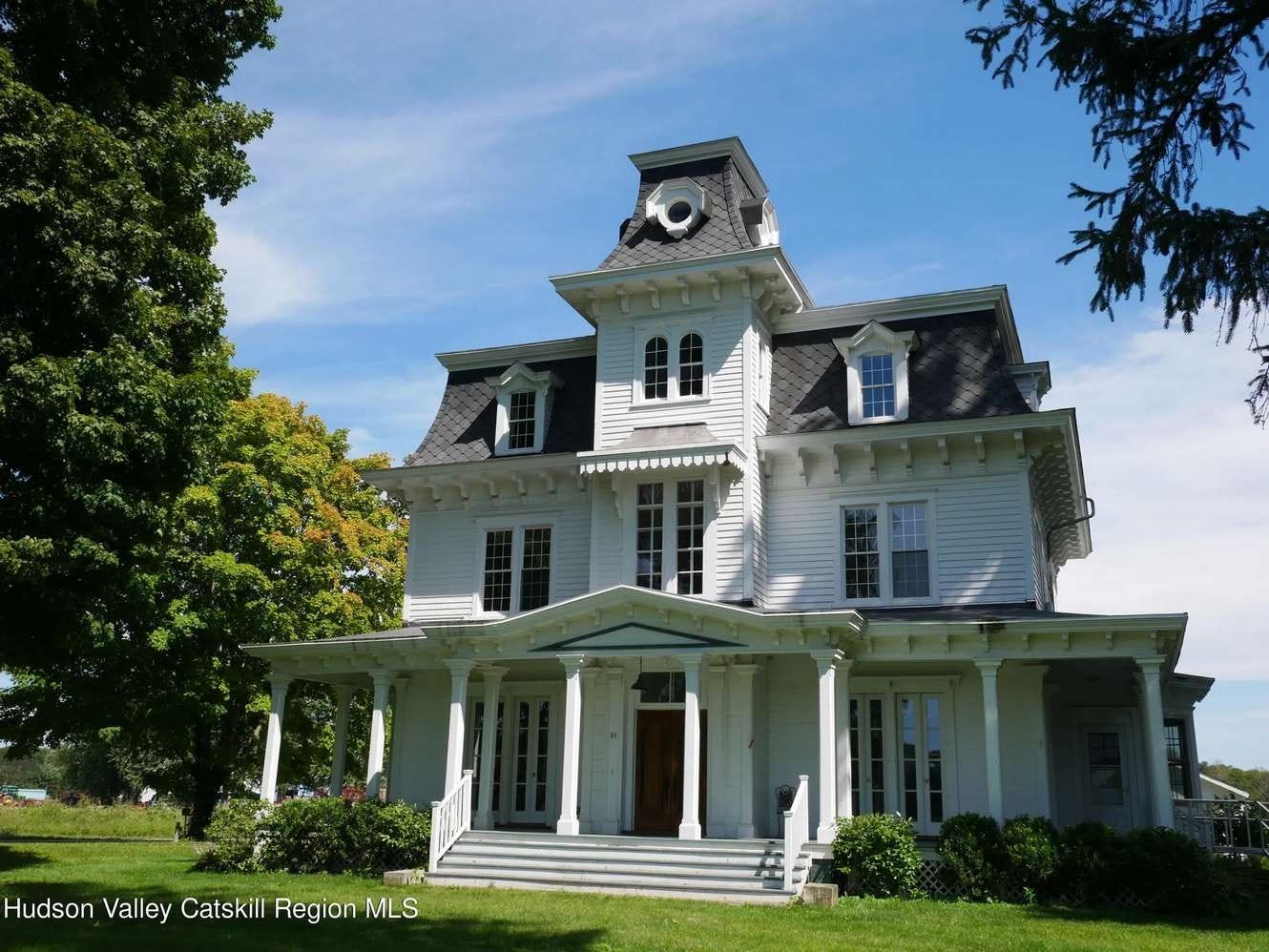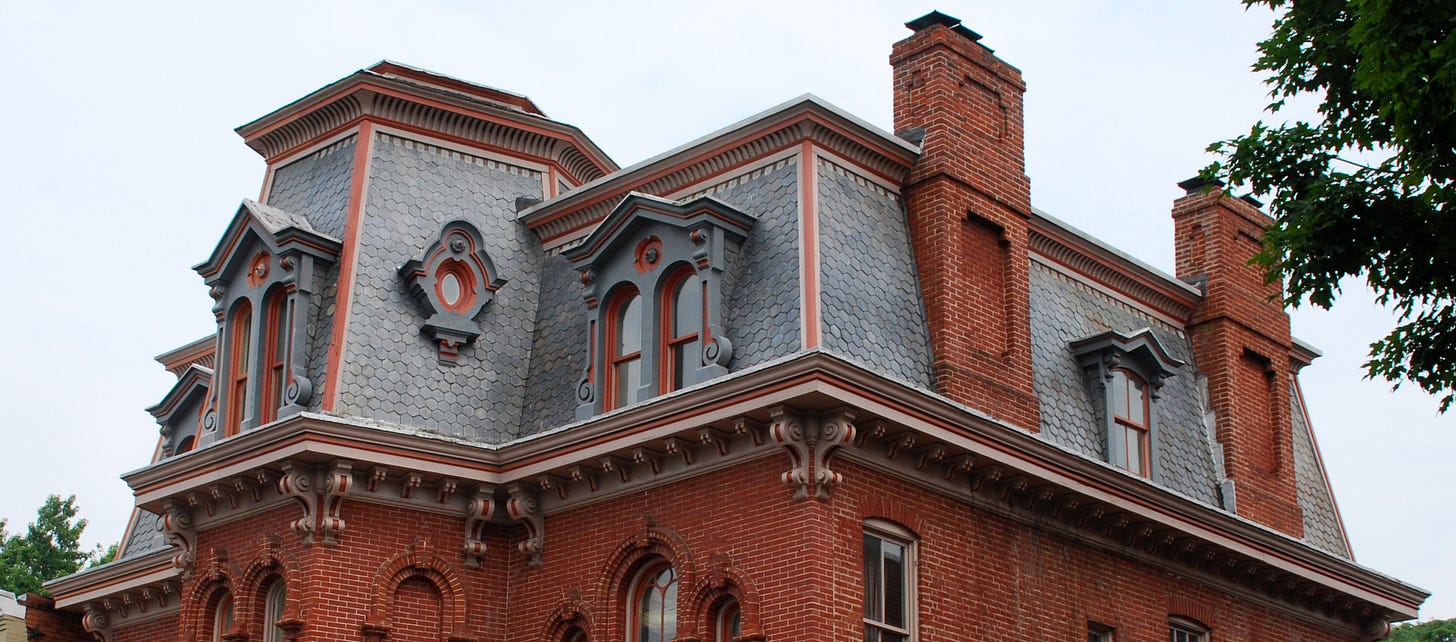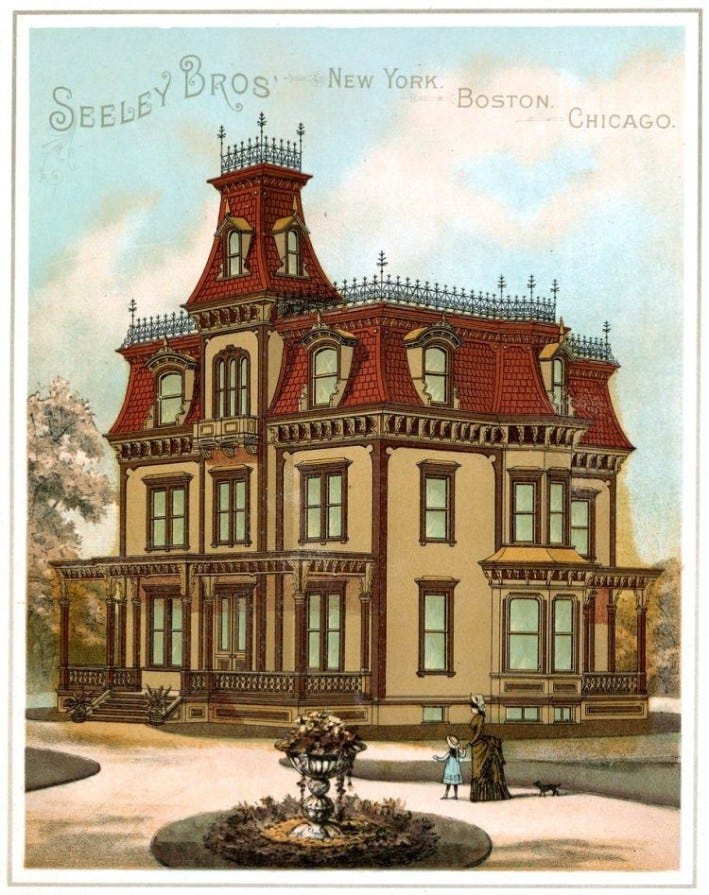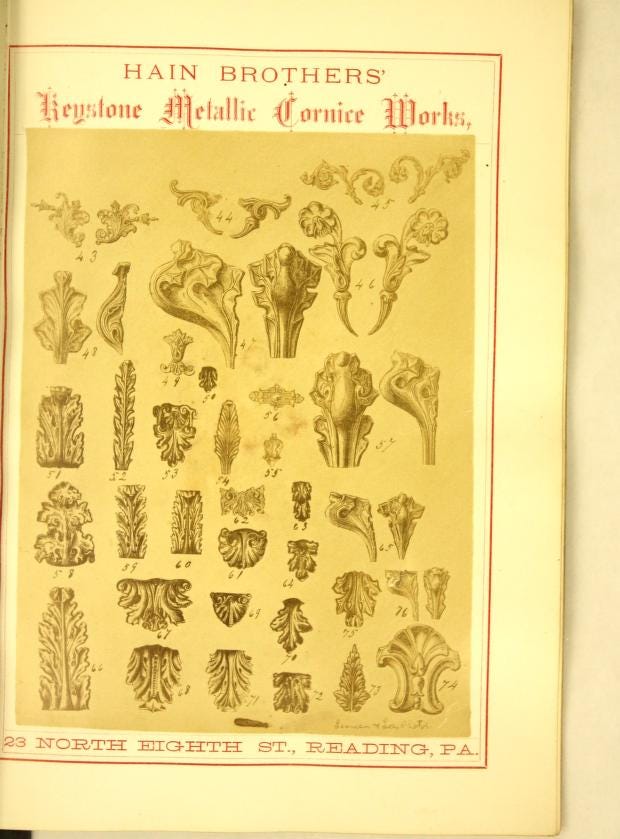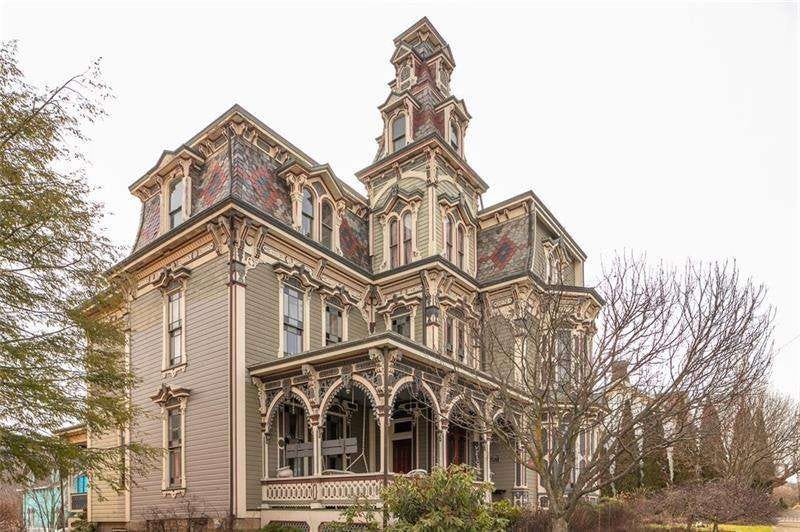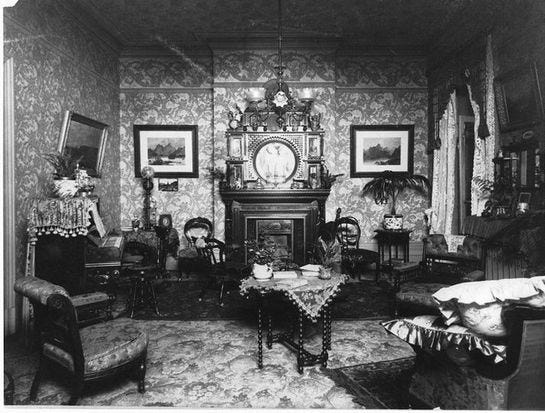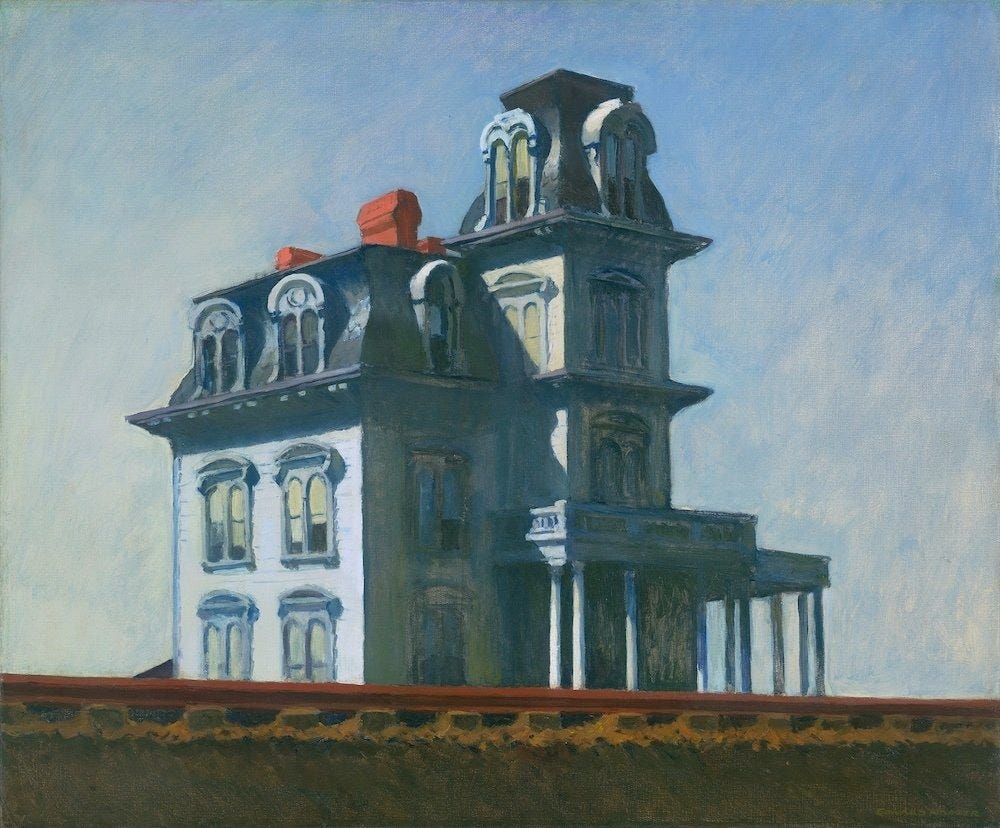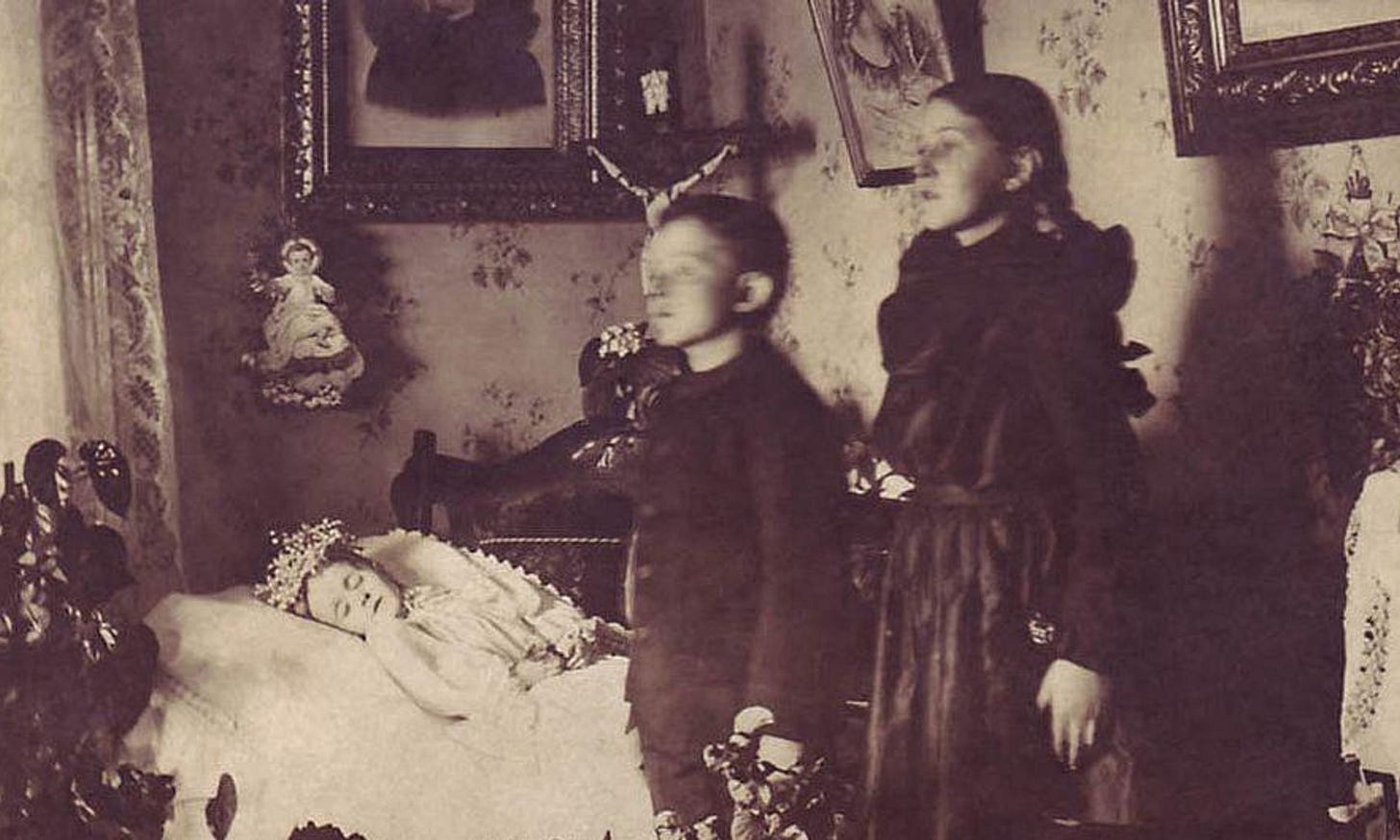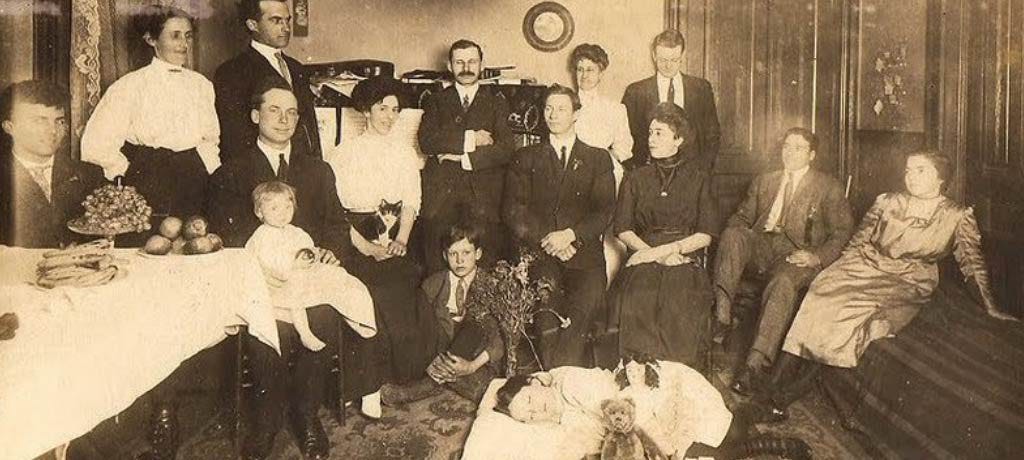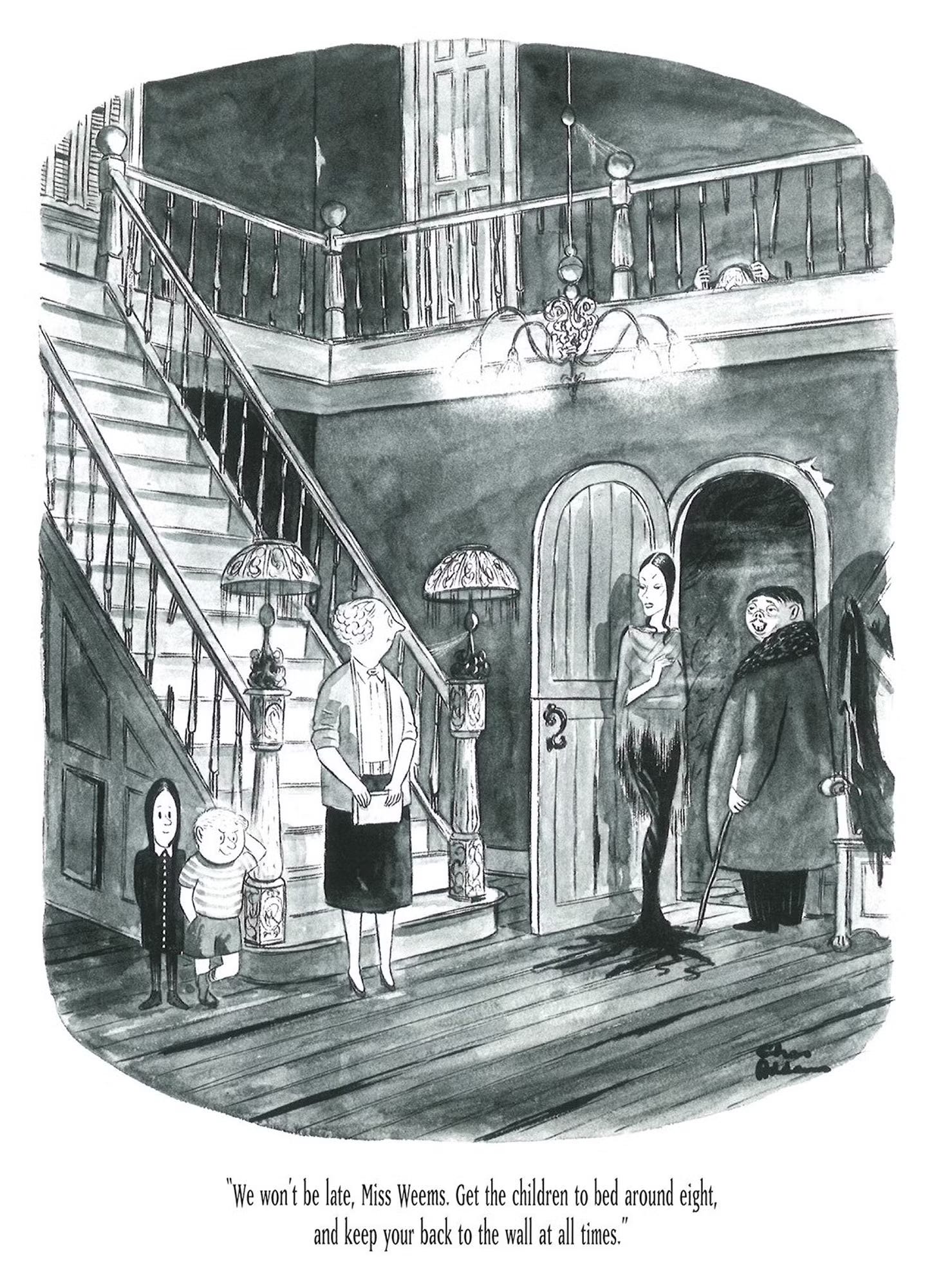You see a large old house looming over the landscape in the distance. As you walk up the drive and past the rusted iron gates, you see how the once grand exterior has weathered away, leaving the wood siding haggard and warped. The slate on the steep slopping roof is nearly entirely obscured by lichen and seems to sit heavily on the house as it twists and leans, giving the impression that nothing more than the force of habit is holding the structure upright. You decide, against better judgment, to go inside. As you step up onto the sagging porch, you notice the broken balustrades and missing windowpanes letting the breeze drift through. The porch moans heavily as you walk across to the front door. A quick turn of the brass knob gives way much quicker than you expected, letting light fall on the threadbare carpet in the hall, thick with dust…
I'm not just describing the latest house I found in budget on Zillow (linked below), but the scene set for just about every haunted house for the last hundred years. If you ask me, it would be scarier if once you opened that door what lies beyond are plain white walls, a forced open floor plan, and gray wood laminate floors; then yes, I would run screaming from the premises. But if you are to go by any number of movies, TV shows, and the inspiration that comes up on Pinterest when you search for "haunted house," what a haunted house looks like is a Victorian home, specifically a Second Empire.
What is Second Empire, you ask? It's a highly eclectic architectural and decorative art style that became popular during the French Second Empire under Napoleon III from 1852 to 1870. It incorporated elements of neoclassical and baroque styles with the general ethos of leaving no stone undecorated. One style constant is the sloping mansard roof introduced by Francois Mansart, the 17th-century architect known for introducing classism into the French Baroque.
The Second Empire style became popular in the US from around 1860 to 1885, and many of its defining characteristics, including the distinctive mansard roof and heavy decorative detailing, were adapted into vernacular architecture. In America, the vernacular style developed a mix-and-match mentality in its adaptation of architectural styles, exemplifying the American belief that one can pick and choose the best from the past. (Has anything changed?)
When looking for Second Empire homes, they're recognizable by their iconic mansard roof and often feature other details like iron cresting on the roofline, bracketed cornices, and ornate balustrades. For reference, see this Second Empire beauty on Zillow in the Hudson Valley, this one in New Jersey, or this one in Nassau, NY, which wouldn't need much work to turn it into a haunted house…if it isn't already. The rise in popularity of these grand and embellished homes was made possible by the Second Industrial Revolution and the use of automatic machinery. Most architectural elements could now be mass-produced for pennies rather than by costly skilled laborers. Catalogs of carved molding, decorative lintels, and every other decorative doodad a Victorian heart could desire were now available to the growing middle classes to adorn their homes in ways that were previously only available to the very wealthy.
So how and when did the Second Empire become so inundated with ghosts?
First, it was a matter of taste. In Sara Burns' 2012 paper "Better for Haunts: Victorian Houses and the Modern Imagination," she states, "In the early twentieth century, all things Victorian—including houses— came under such a withering onslaught that if words alone could destroy, not a single structure would have been left standing."
According to Burns, all things of the later Victorian period would be considered excessive, ugly, and un-American. In 1904 architect Joy Wheeler Dow claimed that the 1870's brought on a "reign of terror" during which the hideous Second Empire mansard roofs “rampaged unchecked in the American landscape”.
However, it was not only the excessive ornamentation that people began to shirk away from. In the public consciousness, the Victorian house had become a haunting reminder of the 19th century's ostentatious displays of wealth, conspicuous consumption, and the harsh economic disparity caused by the Second Industrial Revolution. During which, the upper and middle classes became wealthier while the lower classes remained impoverished, working in dirty factories and mines. Social and aesthetic reforms gained ground with the public and in government, influencing architectural design. Many reformers, primarily those in the arts and crafts movement, saw industrialization not only as an undesirable replacement for craftsmanship but as a social problem.
The dark, ornate Victorian interiors, thick with carpets and draperies were seen as unhygienic and its very presence in society a contamination. The Artist Edward Hopper once referred to the Victorian as a "mongrel" to describe the confluence of styles but also to liken the Victorian to a disease, a pathology of the Gilded Age. It's uncleanliness was countered in the now popular colonial style which was seen as clean, pure, and all American. Despite Hopper's ill view of the Victorian, they became a popular motif in his work, and he painted several during his career.
Monstrously hideous and diseased, the Victorian home had fallen into disrepute. At this point in my research I began to wonder, where did the ghosts come from? I despise homes from the 70s and 80s, but I don't necessarily think they're all haunted. However, our parents weren't hosting funerals in the front parlor and keeping wreaths of the deceased's hair now were they? The Victorians held a morbid preoccupied with death. Society at the time demanded the performance of an elaborate mourning process and held a desire for a 'good death'. At the time, death was frequent and familiar and as a result Victorians encouraged close proximity to the dying. A slow death from, from tuberculosis for example, was romanticized and considered a ‘good death’ as it gave ample time for spiritual reconciliation and for the production of deathbed drawings, photographs, and for mourners to gather. While many Victorians didn't fear death, they did fear not being properly mourned. It was an extremely common practice to hold a funeral at home and prepare it for the 'death watch', the time between dying and the funeral. The deceased were either displayed in the parlor or tucked away in their bed to appear as if they were simply sleeping. These macabre rituals and beliefs had faded by the 1900s as death rates slowed and society began to move into the modern era. However, the memory of their ghoulish practices only added to the idea that their homes were haunted.
By the 1930s, many Victorian houses had been demolished, but many more had been left to deteriorate, solidifying in the collective consciousness the idea of the dark and grim old Victorian house as a dilapidated and cobwebbed specter of the past. When Charles Addams, the creator of The Addams Family, was coming up with the design for what would be the Addams' ancestral home, the idea of a turreted, mansard-clad Second Empire monstrosity was obvious.
Which, quick aside, if you're unfamiliar with Charles Addams, I highly recommend you look into this wonderfully morbid man. He was a true Addams family member with a delightfully dark sense of humor. He decorated his Manhattan home with medieval armory and later lived in a house attached to a pet cemetery he called "The Swamp." I just love it. Anyway…
According to Addams, the Victorian was simply "better for haunts". His illustration, and just about any depiction thereafter, of a looming dilapidated Victorian house needed no words to relay the idea that it was haunted. It was inherently so. The Bates house in movies like Psycho, mansions in various episodes of Scooby Doo, The Munsters' home, and of course, The Addams Family, all have come to rely on the trope of the Mansard roof-clad Victorian as the epitome of a haunted house.

Curious about how one should properly decorate the interior of you haunted house to turn it into a haunted home? I’d watch the original Addam’s Family episode where Morticia plays interior decorator to her neighbors the Drigbys which results in the poor Drigbys emigrating to Timbuktu. Curious readers can watch it here and thank me later by liking and sharing this post.
Thanks very much for reading and happy haunting!
xo
Julia






